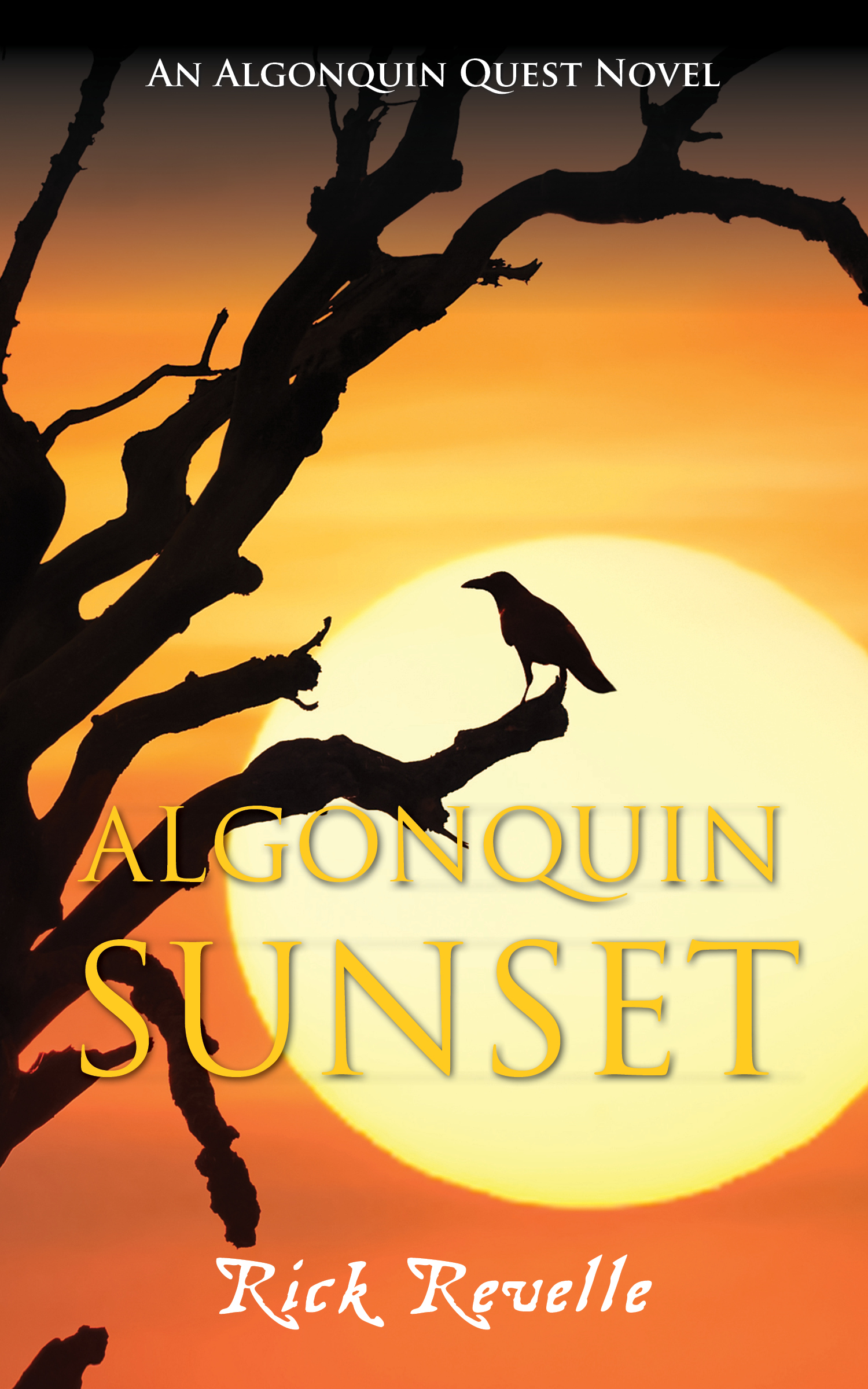| ________________
CM . . .
. Volume XXIV Number 4. . . September 29, 2017
excerpt:
Algonquin Sunset, the third of the “Algonquin Quest” trilogy, although a good novel, is far more muted than the first two. When Algonquin Spring ended, readers were left with a cliff-hanger: as I said when I reviewed this novel, “Mahingan is narrating the chapter, ‘The Clash of Nations’ and he is on the verge of reuniting with his wife and daughter. Corn Dog and his forces, however, have surrounded him and are about to attack.” The third novel never recounts the final battle that claimed Mahingan. Instead, Revelle opts to begin the final book 12 years later. Since Revelle worked so hard in Algonquin Spring to create a cliffhanger ending, it seems strange (and ironic) that Revelle never satisfies his readers. Once one gets over the quiet beginning, Algonquin Sunset does take the reader on a satisfying journey, albeit without the narrative bumps and jostles of the previous book. The newest element in the trilogy is the introduction of the Lakhota (Sioux), enemy to the Anishnaabe. Because this tribe is based farther West – North and South Dakota – it allows Revelle to create a lovely extended scene where a buffalo hunt is described. That chapter – Chapter 12, “One Dies So Another Can Live” – symbolizes both the strengths and weaknesses of the entire novel: it depicts the vast intricacies of a buffalo hunt in a documentary fashion, but the narrator of the event (Chanku Waste) seems distant and paper thin. In fact, all three narrators of the novel (Waste, Anoki and Zhashagi) suffer from this quality; the effect, unfortunately, is that the reader feels little for the characters. Thus, although one may enjoy the novel, it is in the way one may enjoy a non-fiction book about the Algonquin. However, one may still applaud Revelle, particularly for creating a trilogy that is vivid in its depiction of a culture that is rapidly fading. As Revelle points out in his “Afterword”:
It is worth noting that Revelle does not succumb to political gesturing in the trilogy; instead, he stays within the 13th century, chronicling the daily lives of his characters. Novels like Revelle’s document the rich and nuanced life of First Nations people. Pre-colonization life, as the trilogy shows, was far from barbaric and backward. By understanding the ways life used to be for the Algonquin (and Lakhota and Anishnaabe), one feels greater compassion for them. As Canadians, we have a responsibility to understand our past in order not to repeat it (residential schools, Japanese internment, and other horrors), and part of this is valuing pre-colonization First Nation culture. We lament and mourn the genocide that was perpetuated on First Nation people and also celebrate the majesty and splendor of early First Nation life, one depicted so admirably by Rick Revelle. Recommended. Adam Hunt, a teacher of English for almost twenty years, is now Department Head of Library and Social Sciences at Centennial Secondary School in Belleville, ON.
To comment
on this title or this review, send mail to cm@umanitoba.ca.
This Creative Commons license allows you to download the review and share it with others as long
as you credit the CM Association. You cannot change the review in any way or use it commercially. Commercial use is available through a contract with the CM Association. This Creative Commons license allows publishers whose works are being reviewed to download and share said CM reviews provided you credit the CM Association.
Next Review | Table of Contents For This Issue - September 29, 2017 |
